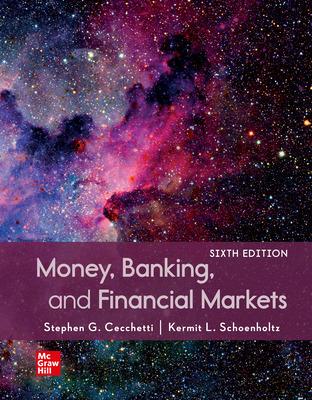The dynamic aggregate demand curve is a downward-sloping relationship between inflation and the quantity of output demanded
Question:
The dynamic aggregate demand curve is a downward-sloping relationship between inflation and the quantity of output demanded by those who use it:
a. Aggregate expenditure = Consumption + Investment + Government purchases
+ Net exports.
i. Aggregate expenditure falls when the real interest rate rises.
ii. The long-run real interest rate r* equates aggregate expenditure with potential output.
b. Monetary policy is described by an upward-sloping monetary policy reaction curve.
i. When policymakers change the nominal interest rate, they change the real interest rate as well, because expected inflation usually doesn’t change quickly.
ii. Policymakers react to increases in inflation by increasing the real interest rate
(as the Taylor rule indicates).
iii. The monetary policy reaction curve is set so that the real interest rate equals the long-run real interest rate r* when inflation equals the central bank’s target.
iv. The monetary policy reaction curve shifts when either the inflation target changes or r* changes.
c. Movements along the dynamic aggregate demand curve occur when monetary policymakers react to changes in inflation by adjusting the real interest rate.
d. The dynamic aggregate demand curve shifts when:
i. An increase in consumer confidence, business optimism, government purchases,
or net exports shifts the dynamic aggregate demand curve to the right.
ii. The monetary policy reaction curve shifts to the right, shifting the dynamic aggregate demand curve to the right.
Step by Step Answer:

Money Banking And Financial Markets
ISBN: 9781260226782
6th Edition
Authors: Stephen Cecchetti, Kermit Schoenholtz





